Which 911 would you like to configure?
Filter
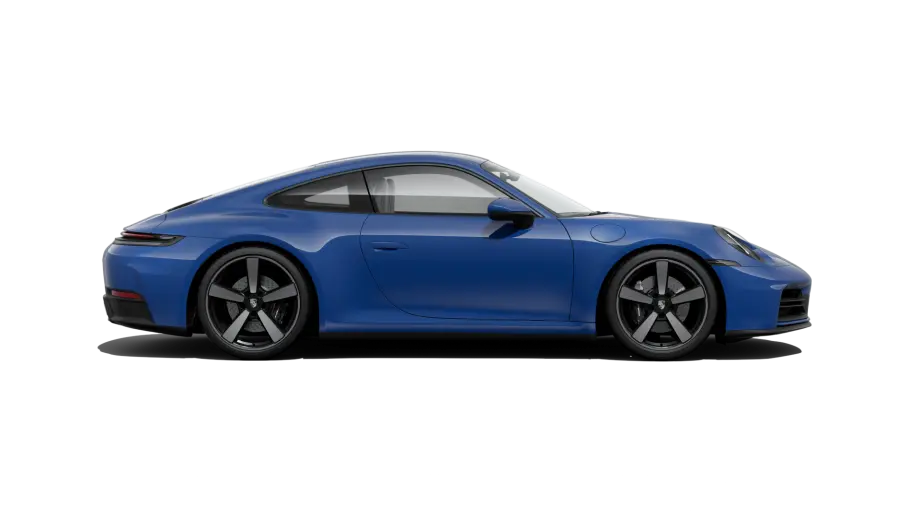 Carrera
Carrera Carrera Cabriolet
Carrera Cabriolet Targa
Targa Turbo
Turbo Turbo Cabriolet
Turbo Cabriolet GT
GT Special Editions
Special EditionsCompare model variants
Discover the differences
 Carrera
Carrera Carrera Cabriolet
Carrera Cabriolet Targa
Targa Turbo
Turbo Turbo Cabriolet
Turbo Cabriolet GT
GT Special Editions
Special EditionsCompare model variants
Discover the differences

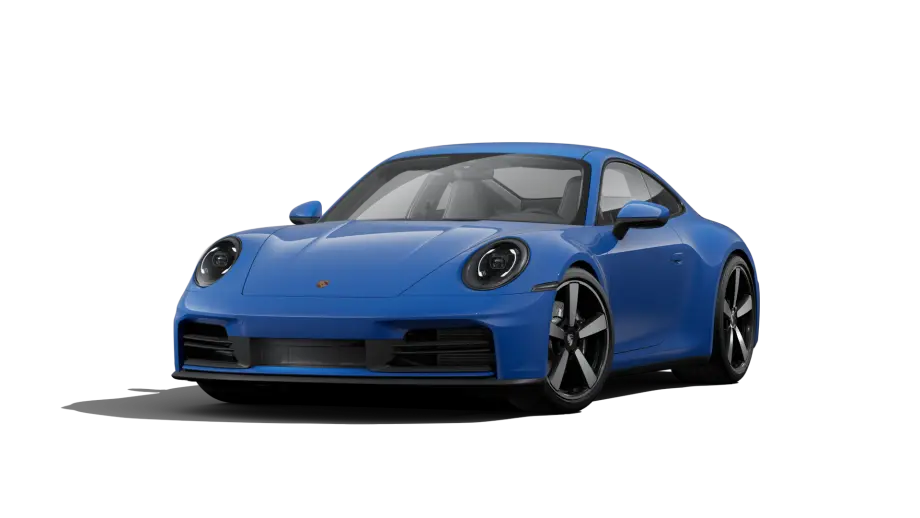

911 Carrera
From SGD 576,588 incl. VAT


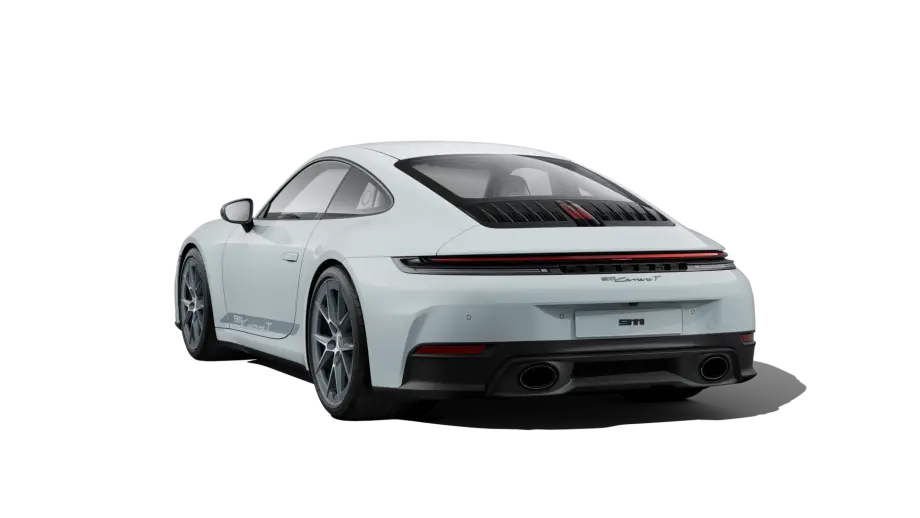
911 Carrera T
From SGD 627,388 incl. VAT



911 Carrera S
From SGD 688,788 incl. VAT



911 Carrera 4S
From SGD 740,888 incl. VAT



911 Carrera GTS
From SGD 788,488 incl. VAT



911 Carrera 4 GTS
From SGD 839,688 incl. VAT
GT, S, 4 and Turbo - do you know the iconic abbreviations?



911 Carrera Cabriolet
From SGD 662,988 incl. VAT



911 Carrera T Cabriolet
From SGD 713,688 incl. VAT



911 Carrera S Cabriolet
From SGD 774,788 incl. VAT



911 Carrera 4S Cabriolet
From SGD 826,888 incl. VAT



911 Carrera GTS Cabriolet
From SGD 874,788 incl. VAT



911 50Y Porsche Design Edition
From SGD 1,007,088 incl. VAT



911 Targa 4S
From SGD 826,888 incl. VAT



911 Turbo
From SGD 982,168 incl. VAT



911 Turbo S
From SGD 1,153,268 incl. VAT



911 Turbo Cabriolet
From SGD 1,068,368 incl. VAT



911 GT3 RS
From SGD 1,138,138 incl. VAT



911 GT3
From SGD 896,788 incl. VAT

Model variants
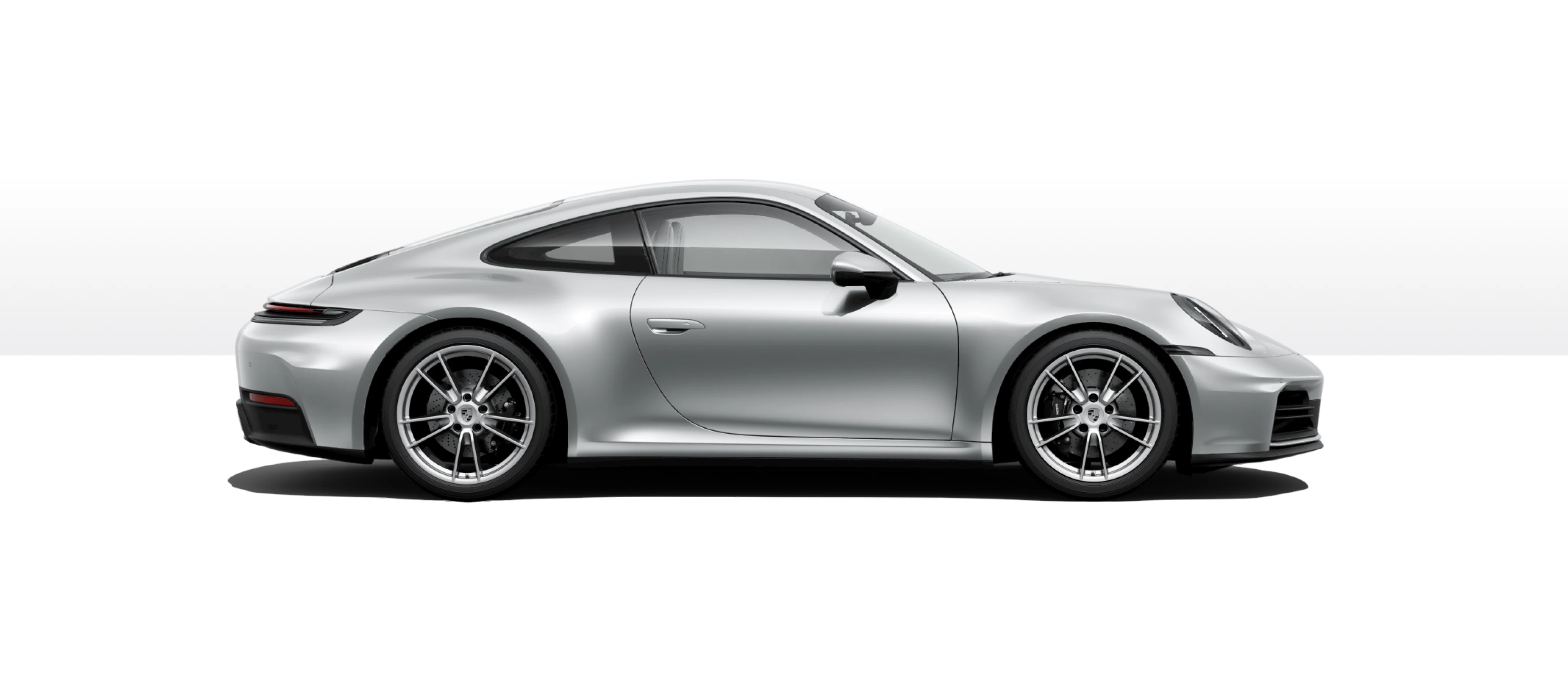
Carrera
The heart of the Porsche brand and the global epitome of the sports car - a unique overall concept that combines iconic design and a high level of sportiness: The Carrera has a broad, self-confident and muscular stance. The long trunk lid with a striking recess in front of the windshield stretches the front end and gives the 911 a dynamic look. The rear section with its strong indentations and low end is also an archetypal feature of the 911 Carrera. The 2+2 seating concept and the front luggage compartment always offer maximum suitability for everyday use. The name comes from the Carrera Panamericana, a Mexican endurance race in which Porsche achieved great success with the 550 Spyder.
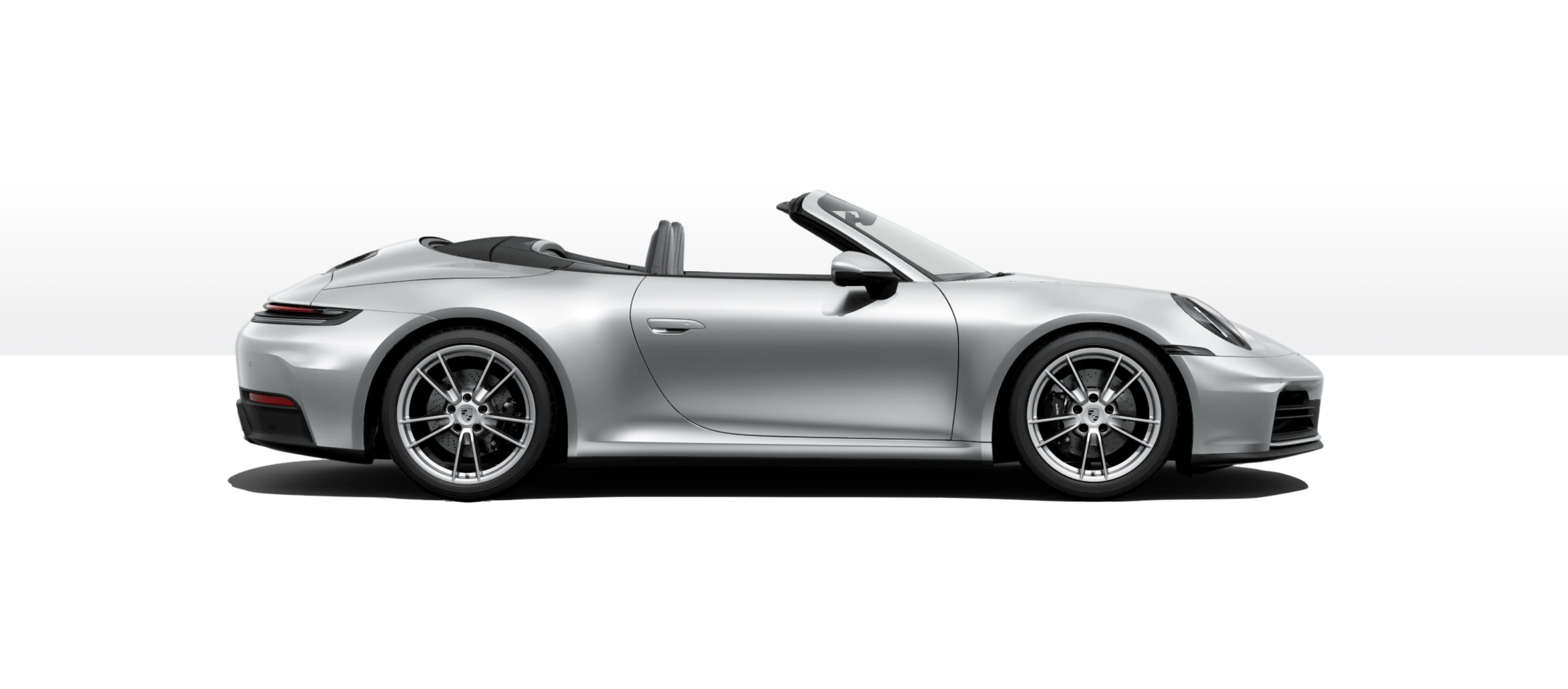
Carrera Cabriolet
The fresh-air version of the 911 adopts the modern design language of the Coupé, but remains unmistakably a Porsche even as a Cabriolet. With almost identical lines, the fully automatic fabric soft top with fixed glass rear window stretches in an elegant arc from the windshield frame to the soft top box lid. The typical 911 roof contour is thus retained in its entirety. The Cabriolet also cuts a fine figure when closed.
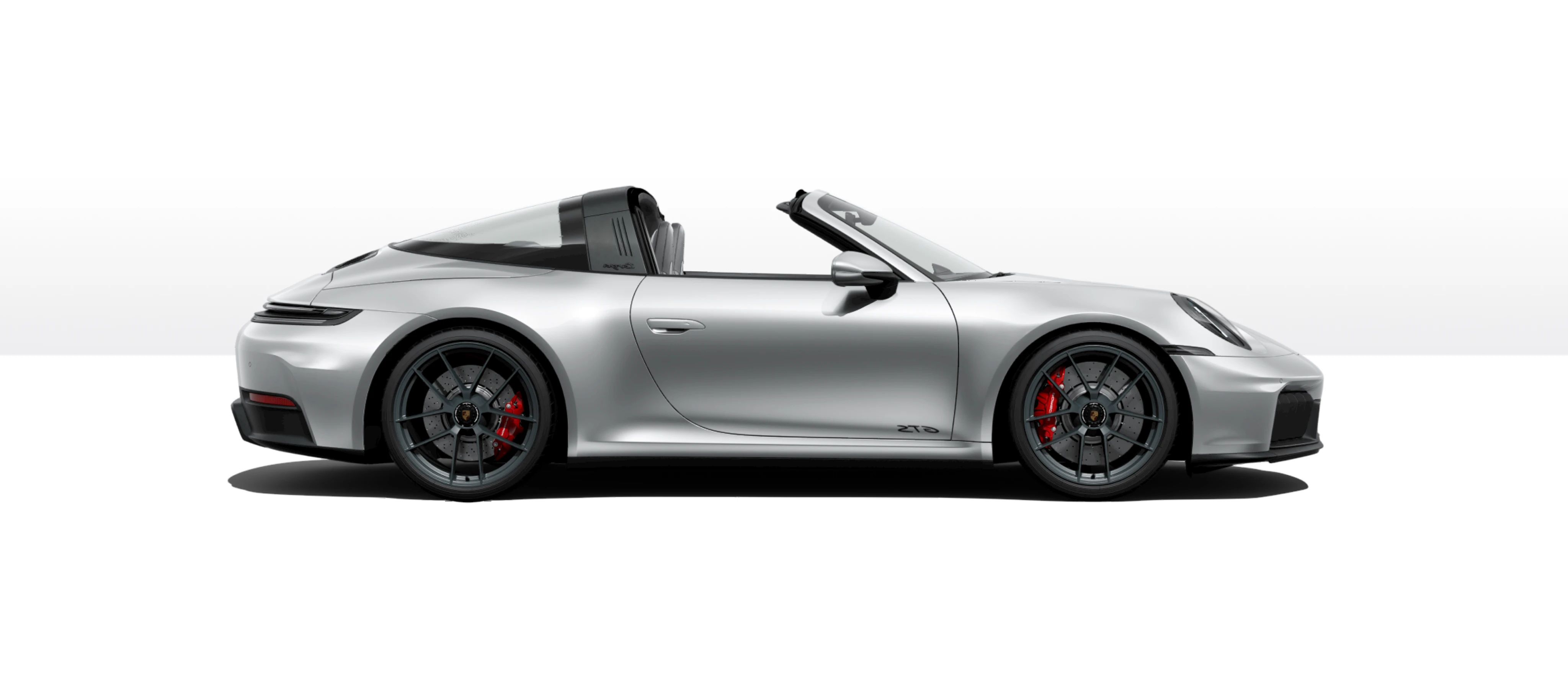
Targa
The 911 Targa is neither a cabriolet nor a coupé, neither a hardtop nor a saloon, but something completely unique: an open version of the 911, characterised by its distinctive roll bar, the movable roof section and a wraparound rear window without a C-pillar. The roof segment is opened and closed at the touch of a button. With the 911 Targa, Porsche combines two worlds: The advantages of “open-top driving” in a convertible are combined with the everyday comfort and safety of a coupé. The name comes from the legendary Sicilian road race Targa Florio and means “shield”.
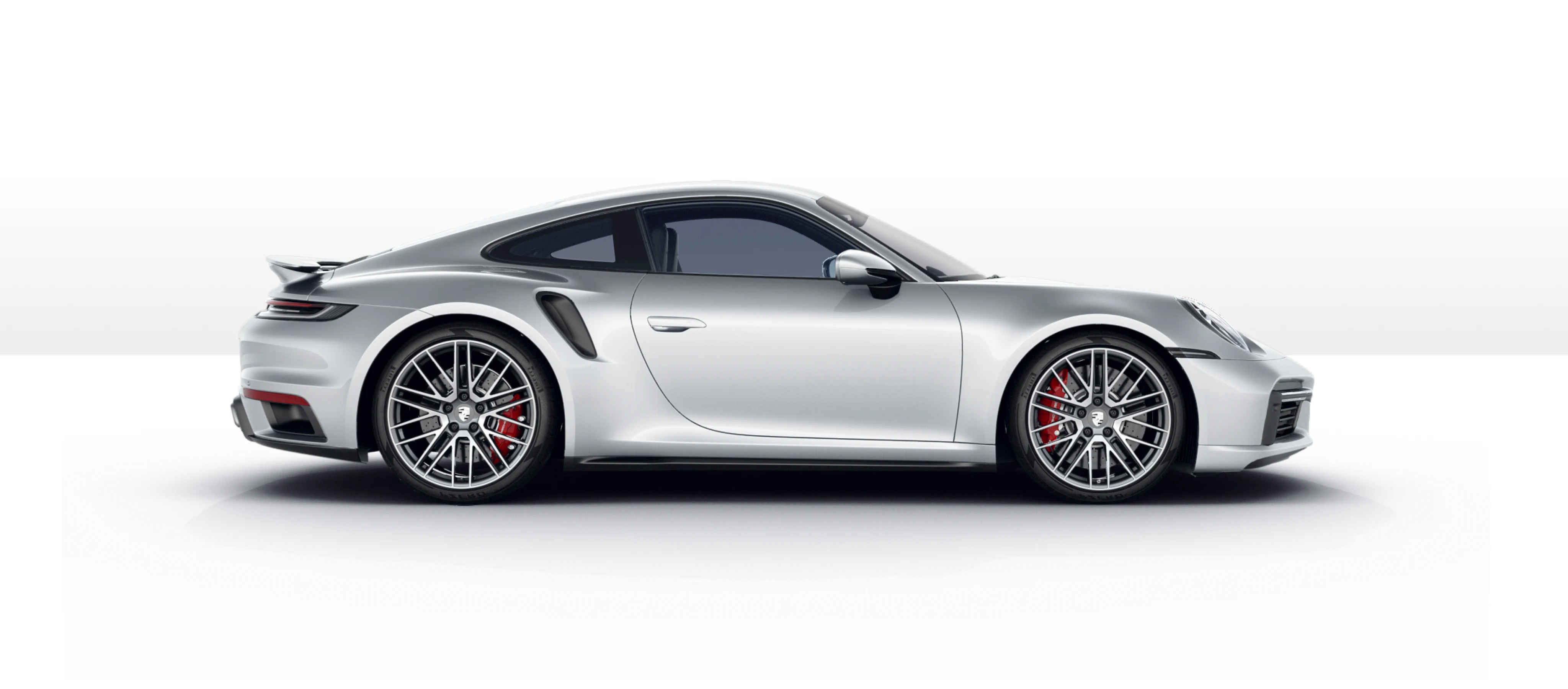
Turbo
The 911 Turbo combines sportiness with everyday usability, emotionality with reliability and dynamism with efficiency. A distinguishing feature that has characterised the 911 Turbo since the first model is the rear fenders with their particularly powerful design. The strongly pronounced front apron with its black airblades deflects any headwind. The variable front spoiler also ensures adaptive aerodynamics by being able to extend low. Process air is drawn in via the 911 Turbo-typical air inlets in the rear side panels. Consistent lightweight construction is used for the rear wing: the striking Turbo feature has a large effective surface despite its low weight. Overall, the rear of the 911 Turbo is powerful and precisely designed. Straightforward, with a clear horizontal alignment.
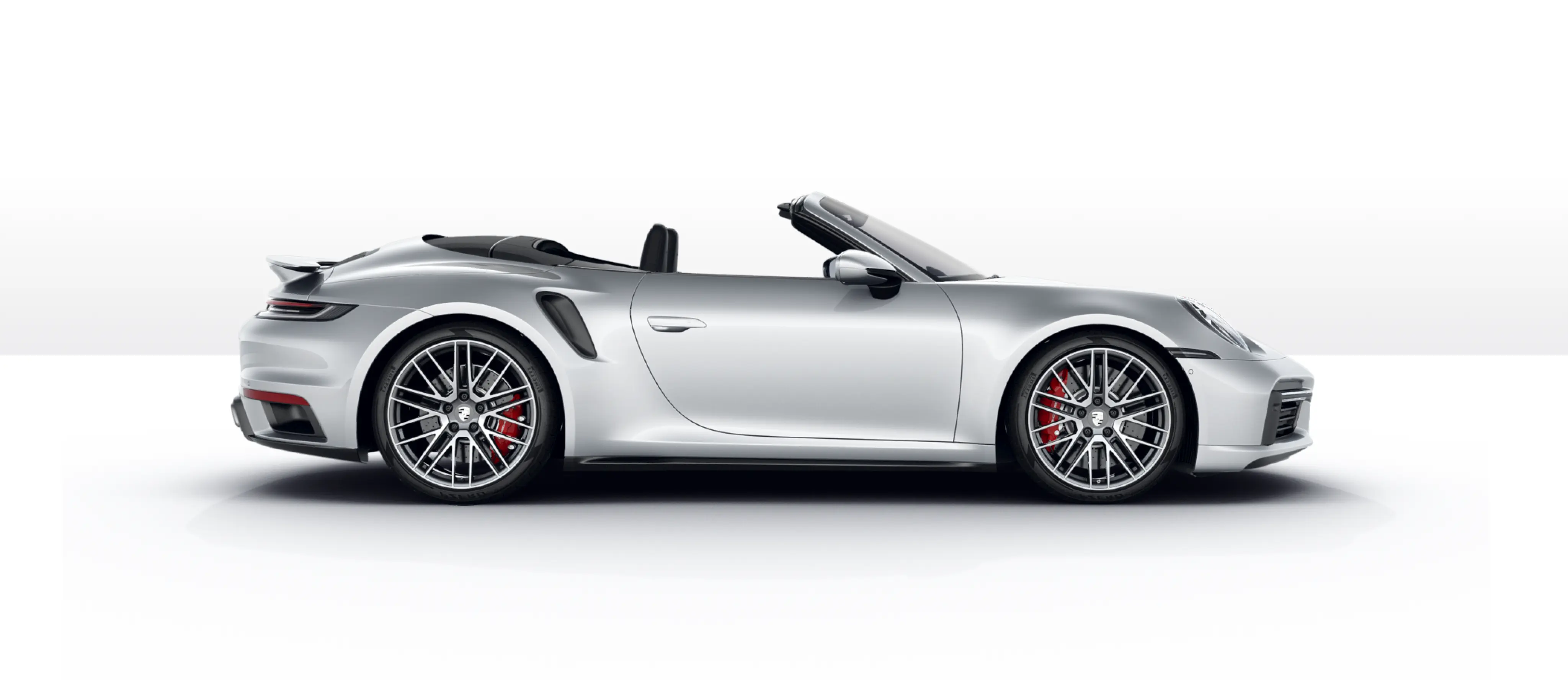
Turbo Cabriolet
It goes without saying that the air supply plays a crucial role in a 911 Turbo. But why should it be limited to the engine? The 911 Turbo Cabriolet models combine the classic silhouette of the 911 Turbo with the option of enjoying the unmistakable sound of the turbo engine even more intensely with the roof open. The 911 Turbo Cabriolet has an electrically operated fabric roof. At the push of a button, it can be extended and retracted in just two seconds, allowing for practically draft-free driving with the top down and minimal wind noise.
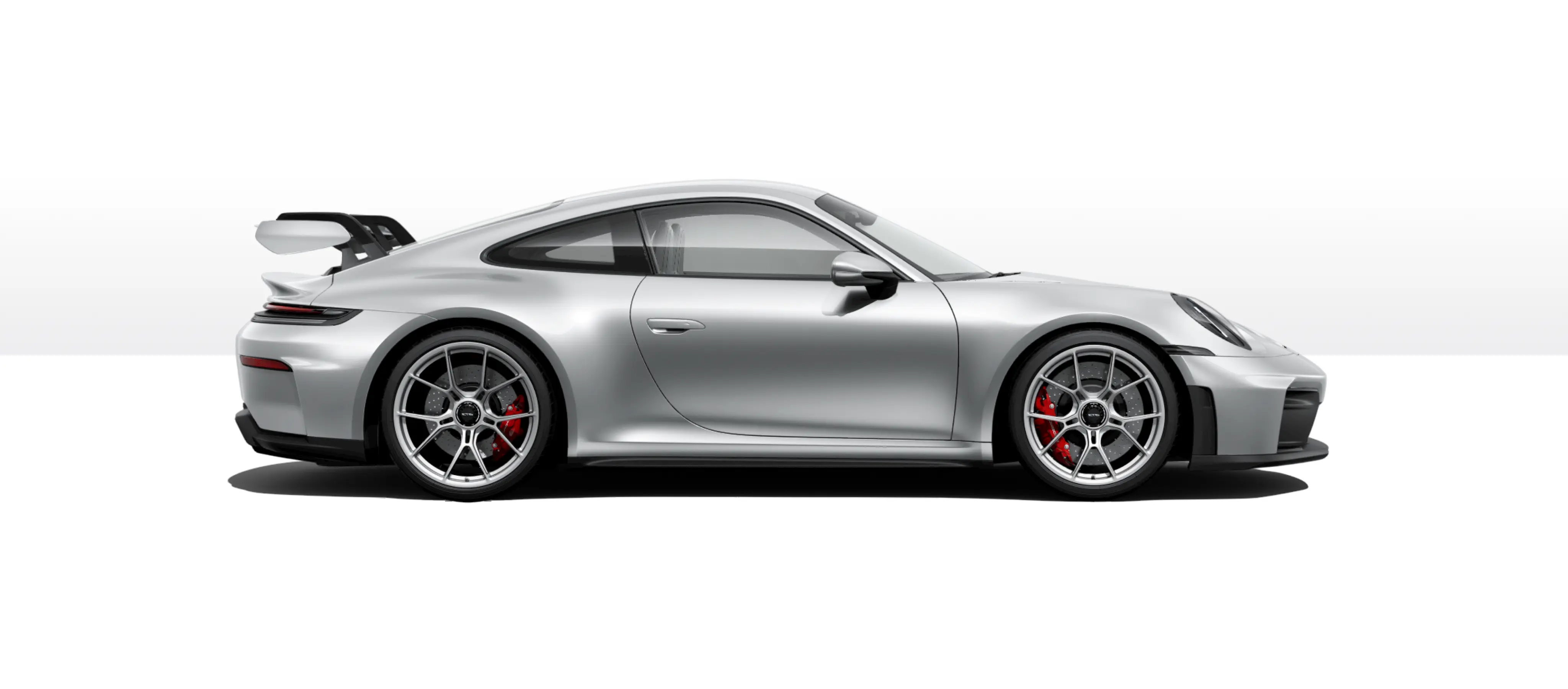
GT
The 911 GT models combine outstanding driving dynamics with unmistakable design. They offer the closest possible proximity to motorsport while at the same time being suitable for everyday use. As for all other GT vehicles from Porsche, the maxim of intelligent lightweight construction also applies to the 911. This is because the vehicle weight has a significant influence on the driving experience: every gram saved does not have to be accelerated, braked or steered. For example, the insulation is proportionately reduced in order to lower the weight and intensify the connection to the road. The 911 GT models embody pure passion for motorsport and enthusiasm for performance.

Model designations

The “4” in the model designation stands for models with all-wheel drive.

The letter T stands for “Touring” and describes models that offer a particularly purist driving experience with reduced but particularly sporty equipment.

At Porsche, S stands for “Sport”: a more powerful version which, in addition to the extra sporty engine, also includes improvements in equipment compared to the basic model.

GTS refers to a further improvement of the S models with even more power and expanded equipment.

A turbo is the top model, the limit of what is possible, a technological pioneer. The fully electric Taycan and Macan in particular show that the type designation is no longer tied to the use of an exhaust turbocharger. Turbo does not stand for a technology here, but rather identifies the most powerful variants.

GT refers to the extremely sporty version of the basic model, built for motorsport, approved for the road.

RS identifies the further enhanced versions of the GT models – the maximum performance possible with road approval.
Do you already have a configuration?
Would you like to transfer your configuration?
If you choose a new model within the same model series, most of the equipment in your current configuration can be transferred to the new model. In some cases, equipment is only available for certain models and may therefore not be adopted for the new model.

















